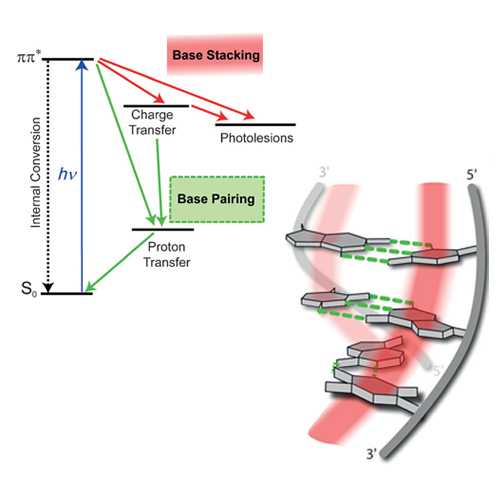Watson–Crick Base Pairing Controls Excited-State Decay in Natural DNA
13-Oct-2014
Angewandte Chemie International Edition, 2014, DOI: 10.1002/anie.201406286, Volume 53, Issue 42, pages 11366–11369 published on 13.10.2014
Angewandte Chemie International Edition, online article
Angewandte Chemie International Edition, online article
Excited-state dynamics are essential to understanding the formation of DNA lesions induced by UV light. By using femtosecond IR spectroscopy, it was possible to determine the lifetimes of the excited states of all four bases in the double-stranded environment of natural DNA. After UV excitation of the DNA duplex, we detected a concerted decay of base pairs connected by Watson–Crick hydrogen bonds. A comparison of single- and double-stranded DNA showed that the reactive charge-transfer states formed in the single strands are suppressed by base pairing in the duplex. The strong influence of the Watson–Crick hydrogen bonds indicates that proton transfer opens an efficient decay path in the duplex that prohibits the formation or reduces the lifetime of reactive charge-transfer states.











